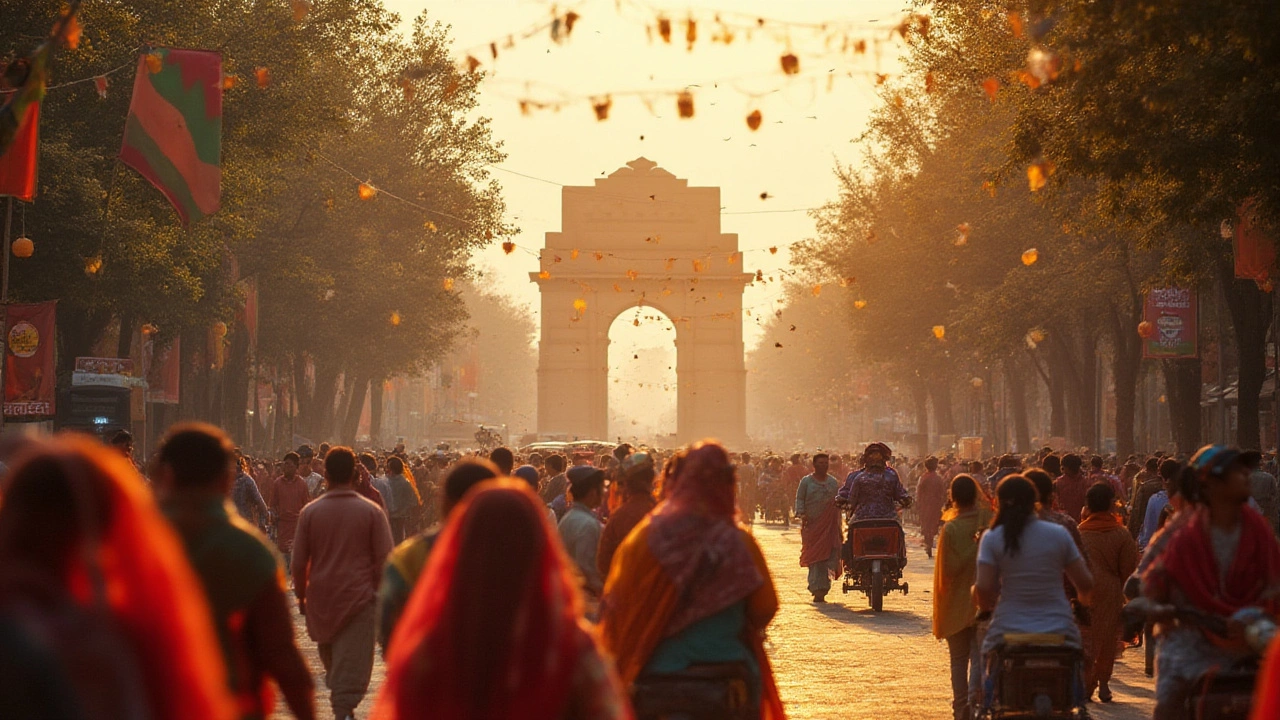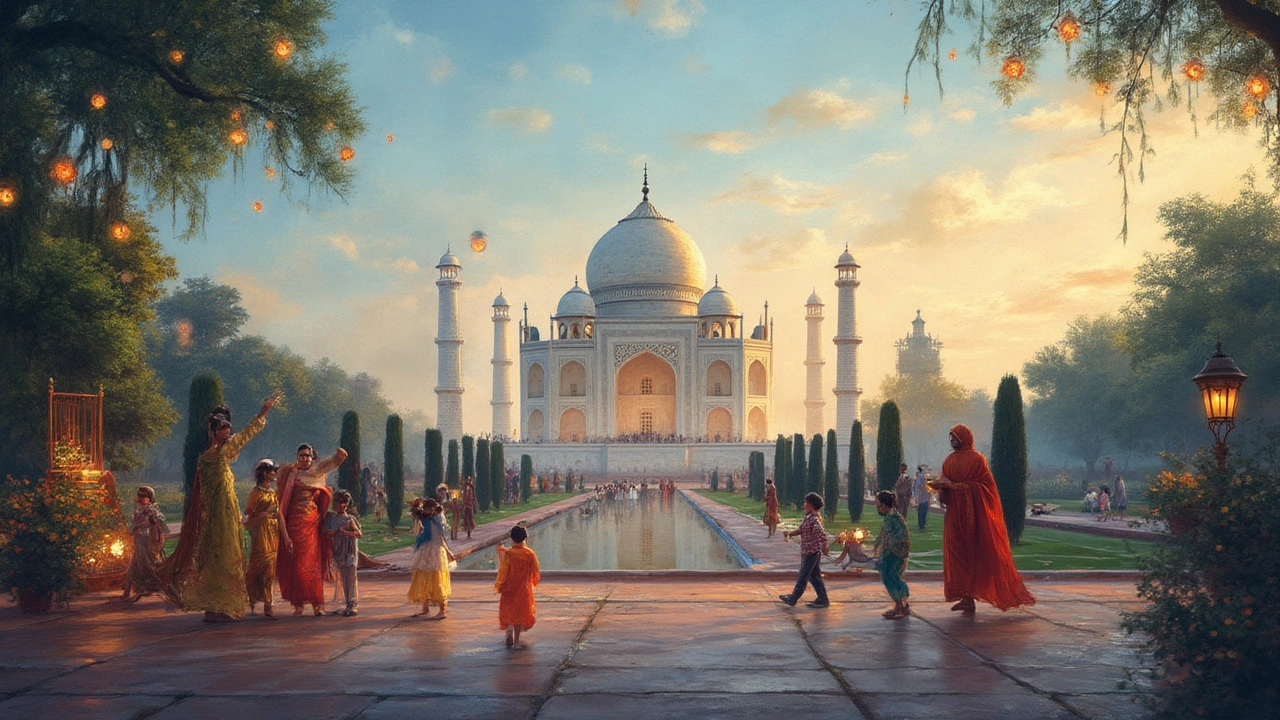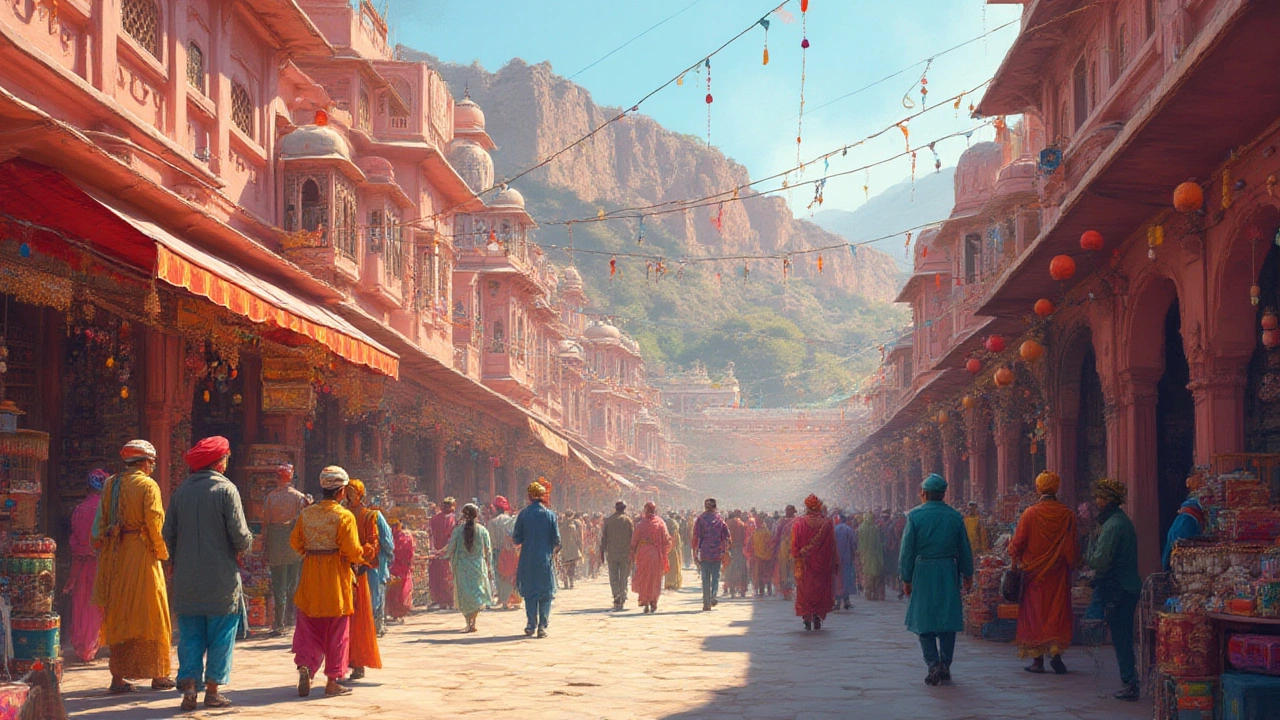Best Time to Visit the Golden Triangle India: Weather, Festivals & Tips
 Jul, 15 2025
Jul, 15 2025
Imagine standing in front of the Taj Mahal at sunrise, watching the marble glow warm under the morning light, not dripping in sweat, and not jostling elbow-to-elbow with thousands of camera-waving tourists. That isn’t luck. That’s knowing the best time to visit the Golden Triangle. So, when exactly does the magic happen in Delhi, Agra, and Jaipur? Turns out, there's a clear winner if you want to dodge rainstorms, choking smog, killer humidity, or heatwaves.
Why Timing Matters in the Golden Triangle
This Indian travel circuit—Delhi, Agra, and Jaipur—looks inviting on postcards, but the reality on the ground changes dramatically with the seasons. The best time to visit the Golden Triangle in India isn’t just about sunny days. It’s about air quality, manageable crowds, comfortable sightseeing, and experiencing the region when its history and culture come alive. Golden Triangle India trips can swing from magical to miserable depending on your timing.
Let’s look at why timing makes or breaks your trip. For one, northern India seasons are pretty wild. The year splits into four main slices: hot, cool, monsoon, and a short spring thrown in for good measure. Delhi and Agra get roasting summers from April to June, with temperatures regularly pounding past 40°C (104°F). Jaipur, partly desert, cooks just as much. Monsoon season, from July to September, means flooded streets, unpredictable downpours, and sticky humidity. Air quality in Delhi tanks at certain times, especially around November, thanks to crop burning and Diwali fireworks. Then you’ve got the winter months, November through February. In these, you wake up to crisp mornings and evenings cool enough for a light jacket, but the days stay sunny and pleasant—perfect for walking forts, exploring spice markets, and standing awe-struck at Mughal palaces. Add in India’s festival calendar and crop of local holidays, and you’ve got some clear windows when the Golden Triangle seriously shines.
According to the India Meteorological Department, peak temperatures can easily reach 45°C (113°F) in May and June. Humidity climbs over 80% during monsoon in July and August. Winter daytime temps, by contrast, average a friendly 22°C (72°F). These numbers are not just statistics. They can mean the difference between exploring comfortably for eight hours or hiding in your hotel’s air conditioning by noon.
| Month | Temperature (°C) | Rainfall (mm) | Notes |
|---|---|---|---|
| Jan | 8–22 | 15 | Cool, light fog, few crowds |
| Feb | 12–25 | 20 | Pleasant, Holi festival |
| Mar | 15–31 | 10 | Warm, start of heat |
| Apr | 20–36 | 5 | Very hot |
| May | 25–40 | 15 | Peak heat, occasional dust storm |
| Jun | 27–41 | 50 | Extreme heat, start of monsoon late June |
| Jul | 27–35 | 210 | Heavy rain, high humidity |
| Aug | 26–34 | 250 | Peak monsoon, wet |
| Sep | 25–34 | 130 | Monsoon withdraws |
| Oct | 18–33 | 40 | Comfort returns |
| Nov | 13–29 | 7 | Delightful, Diwali |
| Dec | 9–24 | 10 | Winter begins, Christmas events |
It’s pretty clear from the numbers: late October through March stands out for travelers who want the best of all worlds.
The Sweet Spot: November to March
If you’re after postcard weather, stick to the months between November and early March. This is when you get the golden mix: cool, dry air, clean blue skies, and city buzz without the heat haze or monsoon grey. Daytime is perfect for screwing up your courage to haggle in Chandni Chowk, climbing Amber Fort in Jaipur, or getting your classic Taj selfie without looking like a melted popsicle. Nights cool off, but you’ll only need a light sweater.
This time of year is also festival season. Diwali—the festival of lights—often falls in October or November. You’ll see cities shimmering with lanterns and candles, fireworks skipping across rooftops, and families swapping sweets. Holi, the festival of color, usually pops up in March. Imagine thousands in frenzied celebration, tossing bright powders at strangers and friends alike. These festivals transform the Golden Triangle into a carnival, but also bring big crowds and price surges for hotels—worth it for the spectacle, but plan ahead.
Air quality? The only hitch in this golden window comes in Delhi during late October and November, when stubble burning on nearby farms fills the city with haze. If you struggle with asthma or respiratory issues, December and February are safer bets for a visit. Early January, you might get foggy mornings, but it burns off quickly.
Jaipur, by the way, hosts the Jaipur Literature Festival every January—a magnet for writers, artists, and some famous faces. So if you prefer city tours sprinkled with cultural events, late January is a smart pick. Agra's Taj Mahotsav in February brings ten days of folk music, dance, and craft stalls to the city’s festival ground right near the Taj Mahal.
Here’s the thing: hotels and flights fill up way faster in these months. You won’t have the place to yourself, but you’ll enjoy the region at its best. Some savvy travelers book their rooms six months out, especially for five-star hotels or boutique heritage stays. With the best weather comes a higher price tag, but most find it worth every rupee.

The Heat and the Rains: Summers and Monsoons
Maybe you don’t mind the heat or a dramatic rainstorm or two. For the adventurous (or those on the tightest budget), April through September comes with serious trade-offs. From late April, daily highs soar to eye-watering levels. Locals often shut shops from noon to four, only venturing outside in early morning or after sundown. Don’t be surprised if popular street food stalls and open-air bazaars close early, too. The sun during May and June isn’t just hot; it’s relentless. Dehydration and sunstroke aren’t rare for travelers trying to squeeze in every monument.
Then comes the monsoon in July and August. The rains can dump as much as 250mm of water a month, suddenly turning roads into rivers. Traffic jams double as cars navigate flash floods in Delhi and Agra. The upside? Everything is lush and green, especially in the gardens around the Taj or Jaipur’s Amber Fort. Rain cools down the air a little, and hotel prices tumble. You’ll find the rare, brave tourist snagging luxury rooms at super off-season rates. Noise softens, the countryside revives, and you can catch farmers planting paddies just outside city limits.
But, don't expect to hop between cities as easily. Trains and buses can run late, traffic slows in the storms, and some forts or rooftop restaurants close during the afternoon downpours. Not to mention, leeches and mosquitoes love this season too! Some shops and heritage properties use the monsoon lull for renovations, so check ahead if your chosen palace or boutique stay will be open. It can be worth it for solo travelers wanting a tranquil pace and a softer side of the often-hyped circuit.
If you get hit by a heatwave, duck into air-conditioned museums or local cafes. Chilled lassi, sweet or salty, becomes a lifeline. Just remember, seasoned locals avoid strenuous sightseeing during these months for good reason.
What to Expect Each Month in the Golden Triangle
Every month brings its own quirks, so here’s a quick walkthrough to help match your trip with your vibe. January is crisp, with morning fog particularly in Delhi—even the Taj Mahal can look hauntingly beautiful through the mist. Warm afternoons, low crowds, and decent air, but bring a jacket for after dark. February is similar, plus you get Holi prep and Agra’s Taj Mahotsav. March tips into real warmth; gardens bloom, but afternoons can start to bite.
April starts roasting by Indian standards. Everything still works, but midday is for malls, museums, or sipping chai from the shade. May goes to the extreme. The temperature chart keeps climbing, and open-air adventures get brutal. If you must visit in this window, make sightseeing plans for sunrise and sunset, and fit naps or pool time into midday hours.
June is an odd mix—dry at first, then the monsoon arrives with a punch towards the end of the month. The air cools slightly, but the humidity skyrockets. July and August, monsoon in full swing. Streets can flood and the city drains struggle, especially with the volume of rain Delhi gets. The plus: you’ll get great deals on accommodations, and the green countryside blooms in photos. Photographers love the low-angle light and the post-monsoon wash that makes historic forts glow.
September is a mix—monsoon winds down, often hot and muggy but less rainy. October is transitional: you can luck out with comfortable, dry days and fewer tourists, especially in the first half. By late October, festival season kicks off. November, festival lights linger, and air quality depends on the stubble burning season (watch the local news for updates). December is another sweet spot. The Christmas-New Year period sees a spike in prices, but hotels and restaurants roll out seasonal menus and decorations.
The best advice? June, July, and August are ideal if you crave quiet, privacy, and can happily handle humidity and rain. November to February is your pick if comfort and ambiance win out. And if you want to play the odds for both vibe and fun, late October or March gives you a bit of everything without extremes on either end.

Golden Triangle Travel Tips: Weather, Packing, and Local Life
Tackling the Golden Triangle is a heady combo of ancient monuments, wild traffic, and flavor-packed street food. But the season you pick changes everything, including what you pack and how you plan your day.
- If you're coming between November and March, bring a sweater, scarf, and extra socks—nights get chilly, and Delhi in January can surprise you with morning fog.
- April through June means sun protection: wide-brimmed hats, light cotton shirts, sunscreen, and a reusable water bottle with a filter. Cooling towels help a ton when sightseeing.
- Monsoon demands an umbrella, waterproof shoes, and quick-dry clothes. Mosquito repellent is your new best friend. A compact rain jacket saves the day.
- The cheapest deals are in the sticky heat of summer and peak monsoon. If you’re flexible and don’t mind unpredictable weather, grab the bargains.
- Crowds peak during major festivals. Book transport and hotels 3-4 months out if you want the best value, or aim for shoulder-season just after major holidays end.
- Mornings are calmer, both for sightseeing and dodging tour bus groups. Hit big attractions like the Taj at sunrise. Many old city bazaars come alive just before dusk when locals do their shopping.
- Watch air quality warnings for Delhi—especially late October and early November. If the smog index spikes, limit outdoor time or bring a high-quality mask.
- If visiting during Holi, wear old clothes (the colored powders will never wash out), and cover your hair if you don't want a rainbow for weeks.
- Always carry small notes—street vendors rarely break large bills, and you'll want change for chai, snacks, and rickshaw rides.
- Festival season means late-night street celebrations—plan ahead if you’re a light sleeper and want a quiet hotel room.
Train tickets through IRCTC (the official Indian Railways app) go fast in high season. Book popular routes like Delhi–Agra and Agra–Jaipur as soon as you can. Shatabdi Express trains are speedy and reliable for city hops.
If you’re big on food (who isn’t?), certain sweets pop up seasonally: jalebis and hot chai in winter, kulfi (ice cream) in spring, fresh mangoes from May to July. Ask for local recommendations wherever you eat—a Delhi street stall in December sells different snacks than a Jaipur vendor does in August.
You don’t just visit the Golden Triangle for the landmarks. You come for the markets thrumming with bargaining buzz, for rickshaw rides at dawn, and for waking up to temple bells and street hawkers. Picking the right time of year means you won’t just see Delhi, Agra, and Jaipur. You’ll actually feel them at their liveliest.